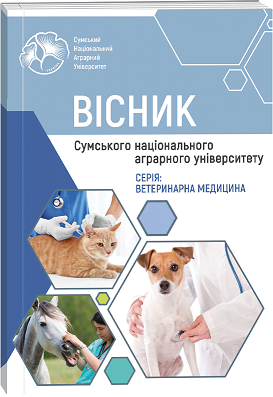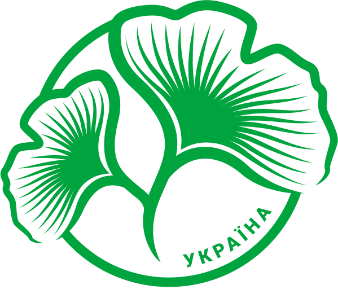ANTIBIOTIC RESISTANCE IS A GLOBAL PROBLEM IN TURKEY FARMING
Abstract
The development and spread of antibiotic resistance has become a serious cause for concern. No major new types of antibiotics have been developed in the past few decades, and almost all known antibiotics are increasingly losing their activity against pathogenic microorganisms. The development and spread of antibiotic resistance is gradually limiting the possibilities of treating and preventing most bacterial pathogens, threatening the main components of modern human and veterinary medicine. The inappropriate use of antibiotics in the treatment of humans, animals, poultry and the environment, as well as the spread of resistant bacteria and resistance genes among these sectors and worldwide, are contributing factors. Antibiotics can enter the environment from various sources, including human waste, veterinary waste and livestock waste. The aim of our work was to determine the biochemical properties of isolated cultures from patmaterial (turkey carcasses of different age groups), and to investigate the sensitivity of cultures to antibacterial drugs. The research was conducted at the Department of Veterinary Sanitary Inspection, Microbiology, Hygiene and Pathological Anatomy. The research used: bacteriological, pathoanatomical, biochemical methods. The article presents the results of the biochemical properties of microorganisms of the E. coli group and their sensitivity to the most commonly used drugs in veterinary practice. The isolated cultures were oxidase-negative, formed indole, did not form hydrogen sulfide, gave a negative Voges-Proskauer reaction, and did not utilize citrate. According to their morphological properties, they were gram-negative rods, elongated in shape, which were located singly or in pairs in smears. When determining the sensitivity of the isolated strains to antibacterial drugs, we found that 26.3% of the isolated cultures were resistant to the most popular antimicrobial drugs in veterinary practice. The isolated E. coli cultures were most resistant to the penicillin group of antibacterial drugs (87.7%), the polymyxin group (83.9%) and macrolides (25.7%).
References
2. Amin, M. B., Sraboni, A. S., Hossain, M. I., Roy, S., Mozmader, T. A. U., Unicomb, L., Rousham, E. K., & Islam, M. A. (2020). Occurrence and genetic characteristics of mcr-1-positive colistin-resistant E. coli from poultry environments in Bangladesh. Journal of global antimicrobial resistance, 22, 546–552. https://doi.org/10.1016/j.jgar.2020.03.028
3. Bahram, M., Hildebrand, F., Forslund, S. K., Anderson, J. L., Soudzilovskaia, N. A., Bodegom, P. M., Bengtsson-Palme, J., Anslan, S., Coelho, L. P., Harend, H., Huerta-Cepas, J., Medema, M. H., Maltz, M. R., Mundra, S., Olsson, P. A., Pent, M., Põlme, S., Sunagawa, S., Ryberg, M., Tedersoo, L., … Bork, P. (2018). Structure and function of the global topsoil microbiome. Nature, 560(7717), 233–237. https://doi.org/10.1038/s41586-018-0386-6
4. Bai, H., He, L. Y., Wu, D. L., Gao, F. Z., Zhang, M., Zou, H. Y., ... & Ying, G. G. (2022). Spread of airborne antibiotic resistance from animal farms to the environment: dispersal pattern and exposure risk. Environment international, 158, 106927.
5. Beytur, A., Yakupogullari, Y., Oguz, F., Otlu, B., & Kaysadu, H. (2014). Oral amoxicillin-clavulanic Acid treatment in urinary tract infections caused by extended-spectrum Beta-lactamase-producing organisms. Jundishapur journal of microbiology, 8(1), e13792. https://doi.org/10.5812/jjm.13792
6. Bruinsma, N., Hutchinson, J. M., van den Bogaard, A. E., Giamarellou, H., Degener, J., & Stobberingh, E. E. (2003). Influence of population density on antibiotic resistance. The Journal of antimicrobial chemotherapy, 51(2), 385–390. https://doi.org/10.1093/jac/dkg072Bryskier, A. (2005). Antimicrobial agents: antibacterials and antifungals (pp. xxx+-1426).
7. Chng, K. R., Li, C., Bertrand, D., Ng, A. H. Q., Kwah, J. S., Low, H. M., Tong, C., Natrajan, M., Zhang, M. H., Xu, L., Ko, K. K. K., Ho, E. X. P., Av-Shalom, T. V., Teo, J. W. P., Khor, C. C., MetaSUB Consortium, Chen, S. L., Mason, C. E., Ng, O. T., Marimuthu, K., … Nagarajan, N. (2020). Cartography of opportunistic pathogens and antibiotic resistance genes in a tertiary hospital environment. Nature medicine, 26(6), 941–951. https://doi.org/10.1038/s41591-020-0894-4
8. Crofts, T. S., Gasparrini, A. J., & Dantas, G. (2017). Next-generation approaches to understand and combat the antibiotic resistome. Nature reviews. Microbiology, 15(7), 422–434. https://doi.org/10.1038/nrmicro.2017.28.
9. Duan, M., Gu, J., Wang, X., Li, Y., Zhang, R., Hu, T., & Zhou, B. (2019). Factors that affect the occurrence and distribution of antibiotic resistance genes in soils from livestock and poultry farms. Ecotoxicology and environmental safety, 180, 114–122. https://doi.org/10.1016/j.ecoenv.2019.05.005
10. Fotina T.I. (2016). Naiposhyrenishi khvoroby indykiv [The most common diseases of turkeys]. Zhurnal «Ptakhivnytstvo», 3(45), 88-90. [in Ukrainian].
11. Garcia-Migura, L., Hendriksen, R. S., Fraile, L., & Aarestrup, F. M. (2014). Antimicrobial resistance of zoonotic and commensal bacteria in Europe: the missing link between consumption and resistance in veterinary medicine. Veterinary microbiology, 170(1-2), 1–9. https://doi.org/10.1016/j.vetmic.2014.01.013
12. Gaucher, M. L., Perron, G. G., Arsenault, J., Letellier, A., Boulianne, M., & Quessy, S. (2017). Recurring Necrotic Enteritis Outbreaks in Commercial Broiler Chicken Flocks Strongly Influence Toxin Gene Carriage and Species Richness in the Resident Clostridium perfringens Population. Frontiers in microbiology, 8, 881. https://doi.org/10.3389/fmicb.2017.00881
13. Giguère, S. (2013). Lincosamides, pleuromutilins, and streptogramins. Antimicrobial therapy in veterinary medicine, 199-210.
14. Giguère, S. (2013). Macrolides, azalides, and ketolides. Antimicrobial therapy in veterinary medicine, 211-231.
15. Harbarth, S., Balkhy, H. H., Goossens, H., Jarlier, V., Kluytmans, J., Laxminarayan, R., Saam, M., Van Belkum, A., Pittet, D., & for the World Healthcare-Associated Infections Resistance Forum participants (2015). Antimicrobial resistance: one world, one fight!. Antimicrobial Resistance and Infection Control, 4, 49. https://doi.org/10.1186/s13756-015-0091-2
16. He, Y., Yuan, Q., Mathieu, J., Stadler, L., Senehi, N., Sun, R., & Alvarez, P. J. (2020). Antibiotic resistance genes from livestock waste: occurrence, dissemination, and treatment. NPJ Clean Water, 3(1), 4.
17. Hendriksen, R. S., Munk, P., Njage, P., van Bunnik, B., McNally, L., Lukjancenko, O., Röder, T., Nieuwenhuijse, D., Pedersen, S. K., Kjeldgaard, J., Kaas, R. S., Clausen, P. T. L. C., Vogt, J. K., Leekitcharoenphon, P., van de Schans, M. G. M., Zuidema, T., de Roda Husman, A. M., Rasmussen, S., Petersen, B., Global Sewage Surveillance project consortium, … Aarestrup, F. M. (2019). Global monitoring of antimicrobial resistance based on metagenomics analyses of urban sewage. Nature communications, 10(1), 1124. https://doi.org/10.1038/s41467-019-08853-3
18. Hutchings, M. I., Truman, A. W., & Wilkinson, B. (2019). Antibiotics: past, present and future. Current opinion in microbiology, 51, 72–80. https://doi.org/10.1016/j.mib.2019.10.008
19. Jiang, X., Ellabaan, M. M. H., Charusanti, P., Munck, C., Blin, K., Tong, Y., Weber, T., Sommer, M. O. A., & Lee, S. Y. (2017). Dissemination of antibiotic resistance genes from antibiotic producers to pathogens. Nature communications, 8, 15784. https://doi.org/10.1038/ncomms15784
20. Kaper, J. B., Nataro, J. P., & Mobley, H. L. (2004). Pathogenic Escherichia coli. Nature reviews. Microbiology, 2(2), 123–140. https://doi.org/10.1038/nrmicro818
21. Katz, L., & Baltz, R. H. (2016). Natural product discovery: past, present, and future. Journal of industrial microbiology & biotechnology, 43(2-3), 155–176. https://doi.org/10.1007/s10295-015-1723-5
22. Khan, S. A., Imtiaz, M. A., Sayeed, M. A., Shaikat, A. H., & Hassan, M. M. (2020). Antimicrobial resistance pattern in domestic animal - wildlife - environmental niche via the food chain to humans with a Bangladesh perspective; a systematic review. BMC veterinary research, 16(1), 302. https://doi.org/10.1186/s12917-020-02519-9
23. Kim, D. W., & Cha, C. J. (2021). Antibiotic resistome from the One-Health perspective: understanding and controlling antimicrobial resistance transmission. Experimental & molecular medicine, 53(3), 301–309. https://doi.org/10.1038/s12276-021-00569-z
24. Kytaieva, D.V., & Petrov, R.V. (2020). Vykorystannia probiotykiv pry vyroshchuvanni indykiv [Use of probiotics in growing turkeys]. NV LNU veterynarnoi medytsyny ta biotekhnolohii. Seriia: Veterynarni nauky, 22(100), 23-27. [in Ukrainian]. https://doi.org/10.32718/nvlvet10004
25. Lim, M. A., Kim, J. Y., Acharya, D., Bajgain, B. B., Park, J. H., Yoo, S. J., & Lee, K. (2020). A Diarrhoeagenic EnteropathogenicEscherichia coli (EPEC) Infection Outbreak That Occurred among Elementary School Children in Gyeongsangbuk-Do Province of South Korea Was Associated with Consumption of Water-Contaminated Food Items. International journal of environmental research and public health, 17(9), 3149. https://doi.org/10.3390/ijerph17093149
26. Liu, Y. Y., Wang, Y., Walsh, T. R., Yi, L. X., Zhang, R., Spencer, J., Doi, Y., Tian, G., Dong, B., Huang, X., Yu, L. F., Gu, D., Ren, H., Chen, X., Lv, L., He, D., Zhou, H., Liang, Z., Liu, J. H., & Shen, J. (2016). Emergence of plasmid-mediated colistin resistance mechanism MCR-1 in animals and human beings in China: a microbiological and molecular biological study. The Lancet. Infectious diseases, 16(2), 161–168. https://doi.org/10.1016/S1473-3099(15)00424-7
27. Maciel-Guerra, A., Baker, M., Hu, Y., Wang, W., Zhang, X., Rong, J., Zhang, Y., Zhang, J., Kaler, J., Renney, D., Loose, M., Emes, R. D., Liu, L., Chen, J., Peng, Z., Li, F., & Dottorini, T. (2023). Dissecting microbial communities and resistomes for interconnected humans, soil, and livestock. The ISME journal, 17(1), 21–35. https://doi.org/10.1038/s41396-022-01315-7
28. Marshall, B. M., & Levy, S. B. (2011). Food animals and antimicrobials: impacts on human health. Clinical microbiology reviews, 24(4), 718–733. https://doi.org/10.1128/CMR.00002-11
29. Mazhar, S. H., Li, X., Rashid, A., Su, J., Xu, J., Brejnrod, A. D., Su, J. Q., Wu, Y., Zhu, Y. G., Zhou, S. G., Feng, R., & Rensing, C. (2021). Co-selection of antibiotic resistance genes, and mobile genetic elements in the presence of heavy metals in poultry farm environments. The Science of the total environment, 755(Pt 2), 142702. https://doi.org/10.1016/j.scitotenv.2020.142702.
30. McCarthy, A. J., Loeffler, A., Witney, A. A., Gould, K. A., Lloyd, D. H., & Lindsay, J. A. (2014). Extensive horizontal gene transfer during Staphylococcus aureus co-colonization in vivo. Genome biology and evolution, 6(10), 2697–2708. https://doi.org/10.1093/gbe/evu214
31. Mellata M. (2013). Human and avian extraintestinal pathogenic Escherichia coli: infections, zoonotic risks, and antibiotic resistance trends. Foodborne pathogens and disease, 10(11), 916–932. https://doi.org/10.1089/fpd.2013.1533
32. Mili, S. A., Islam, M. S., Al Momen Sabuj, A., Haque, Z. F., Pondit, A., Hossain, M. G., Hassan, J., & Saha, S. (2022). A Cross-Sectional Seroepidemiological Study on Infectious Bursal Disease in Backyard Chickens in the Mymensingh District of Bangladesh. Veterinary medicine international, 2022, 9076755. https://doi.org/10.1155/2022/9076755
33. Mingeot-Leclercq, M. P., Glupczynski, Y., & Tulkens, P. M. (1999). Aminoglycosides: activity and resistance. Antimicrobial agents and chemotherapy, 43(4), 727–737. https://doi.org/10.1128/AAC.43.4.727
34. Odoki, M., Aliero, A. A., Tibyangye, J., Maniga, J. N., Eilu, E., Ntulume, I., Wampande, E., Kato, C. D., Agwu, E., & Bazira, J. (2020). Fluoroquinolone resistant bacterial isolates from the urinary tract among patients attending hospitals in Bushenyi District, Uganda. The Pan African medical journal, 36, 60. https://doi.org/10.11604/pamj.2020.36.60.18832
35. Omura, S. (Ed.). (2002). Macrolide antibiotics: chemistry, biology, and practice. Elsevier.
36. Page, S. W., & Gautier, P. (2012). Use of antimicrobial agents in livestock. Revue scientifique et technique (International Office of Epizootics), 31(1), 145–188. https://doi.org/10.20506/rst.31.1.2106
37. Poirel, L., Jayol, A., & Nordmann, P. (2017). Polymyxins: Antibacterial Activity, Susceptibility Testing, and Resistance Mechanisms Encoded by Plasmids or Chromosomes. Clinical microbiology reviews, 30(2), 557–596. https://doi.org/10.1128/CMR.00064-16
38. Song, L., Wang, C., Jiang, G., Ma, J., Li, Y., Chen, H., & Guo, J. (2021). Bioaerosol is an important transmission route of antibiotic resistance genes in pig farms. Environment international, 154, 106559. https://doi.org/10.1016/j.envint.2021.106559
39. Van Boeckel, T. P., Pires, J., Silvester, R., Zhao, C., Song, J., Criscuolo, N. G., ... & Laxminarayan, R. (2019). Global trends in antimicrobial resistance in animals in low-and middle-income countries. Science, 365(6459), eaaw1944.
40. Van Boeckel, T. P., Pires, J., Silvester, R., Zhao, C., Song, J., Criscuolo, N. G., Gilbert, M., Bonhoeffer, S., & Laxminarayan, R. (2019). Global trends in antimicrobial resistance in animals in low- and middle-income countries. Science (New York, N.Y.), 365(6459), eaaw1944. https://doi.org/10.1126/science.aaw1944
41. Van Immerseel, F., De Buck, J., Pasmans, F., Huyghebaert, G., Haesebrouck, F., & Ducatelle, R. (2004). Clostridium perfringens in poultry: an emerging threat for animal and public health. Avian pathology : journal of the W.V.P.A, 33(6), 537–549. https://doi.org/10.1080/03079450400013162
42. Woolhouse, M. E., & Ward, M. J. (2013). Microbiology. Sources of antimicrobial resistance. Science (New York, N.Y.), 341(6153), 1460–1461. https://doi.org/10.1126/science.1243444
43. Zhang, Q., Zhang, Z., Lu, T., Peijnenburg, W. J. G. M., Gillings, M., Yang, X., Chen, J., Penuelas, J., Zhu, Y. G., Zhou, N. Y., Su, J., & Qian, H. (2020). Cyanobacterial blooms contribute to the diversity of antibiotic-resistance genes in aquatic ecosystems. Communications biology, 3(1), 737. https://doi.org/10.1038/s42003-020-01468-1
44. Zhu, T., Chen, T., Cao, Z., Zhong, S., Wen, X., Mi, J., Ma, B., Zou, Y., Zhang, N., Liao, X., Wang, Y., & Wu, Y. (2021). Antibiotic resistance genes in layer farms and their correlation with environmental samples. Poultry science, 100(12), 101485. https://doi.org/10.1016/j.psj.2021.101485
45. Zhu, Y. G., Zhao, Y., Li, B., Huang, C. L., Zhang, S. Y., Yu, S., Chen, Y. S., Zhang, T., Gillings, M. R., & Su, J. Q. (2017). Continental-scale pollution of estuaries with antibiotic resistance genes. Nature microbiology, 2, 16270. https://doi.org/10.1038/nmicrobiol.2016.270

 ISSN
ISSN  ISSN
ISSN 



